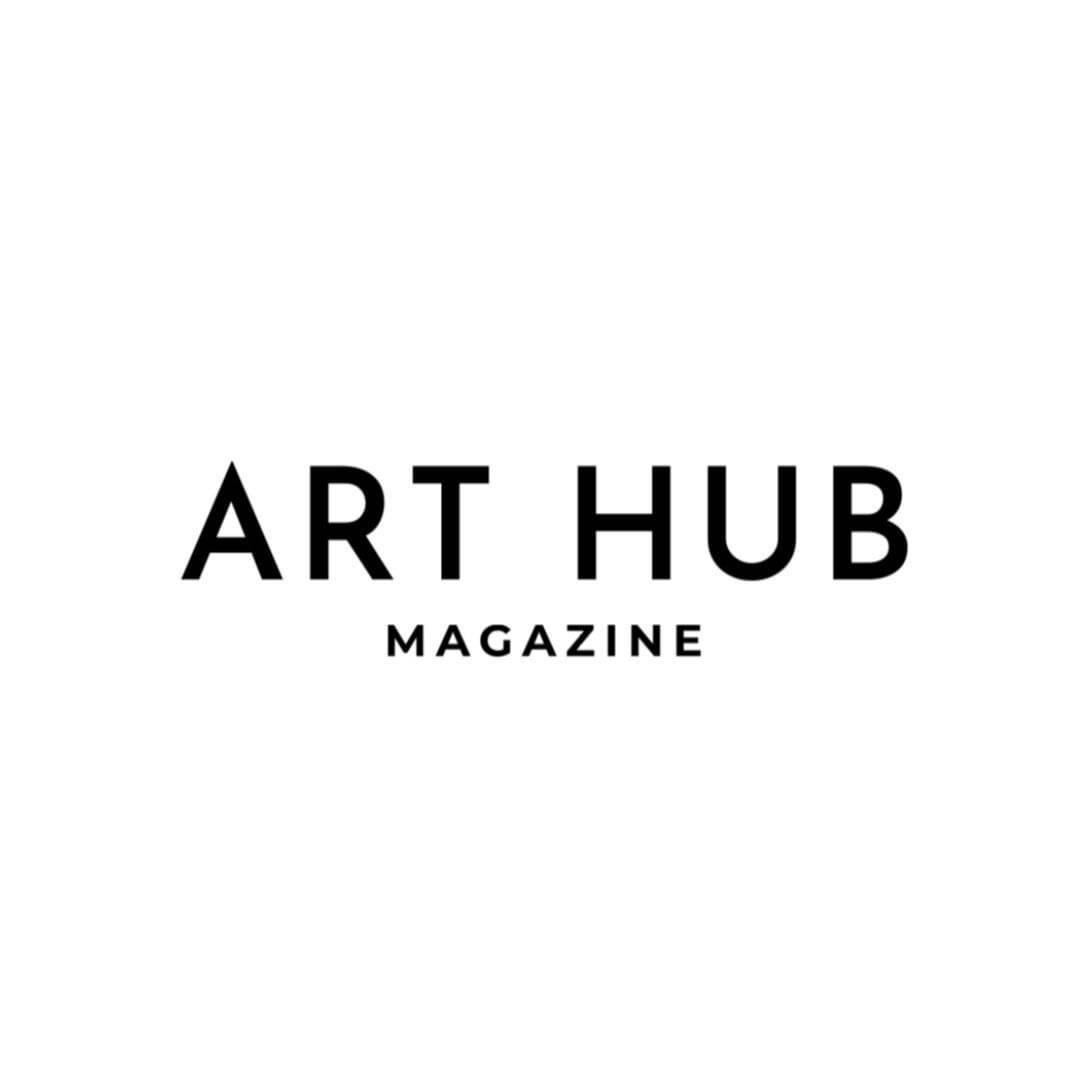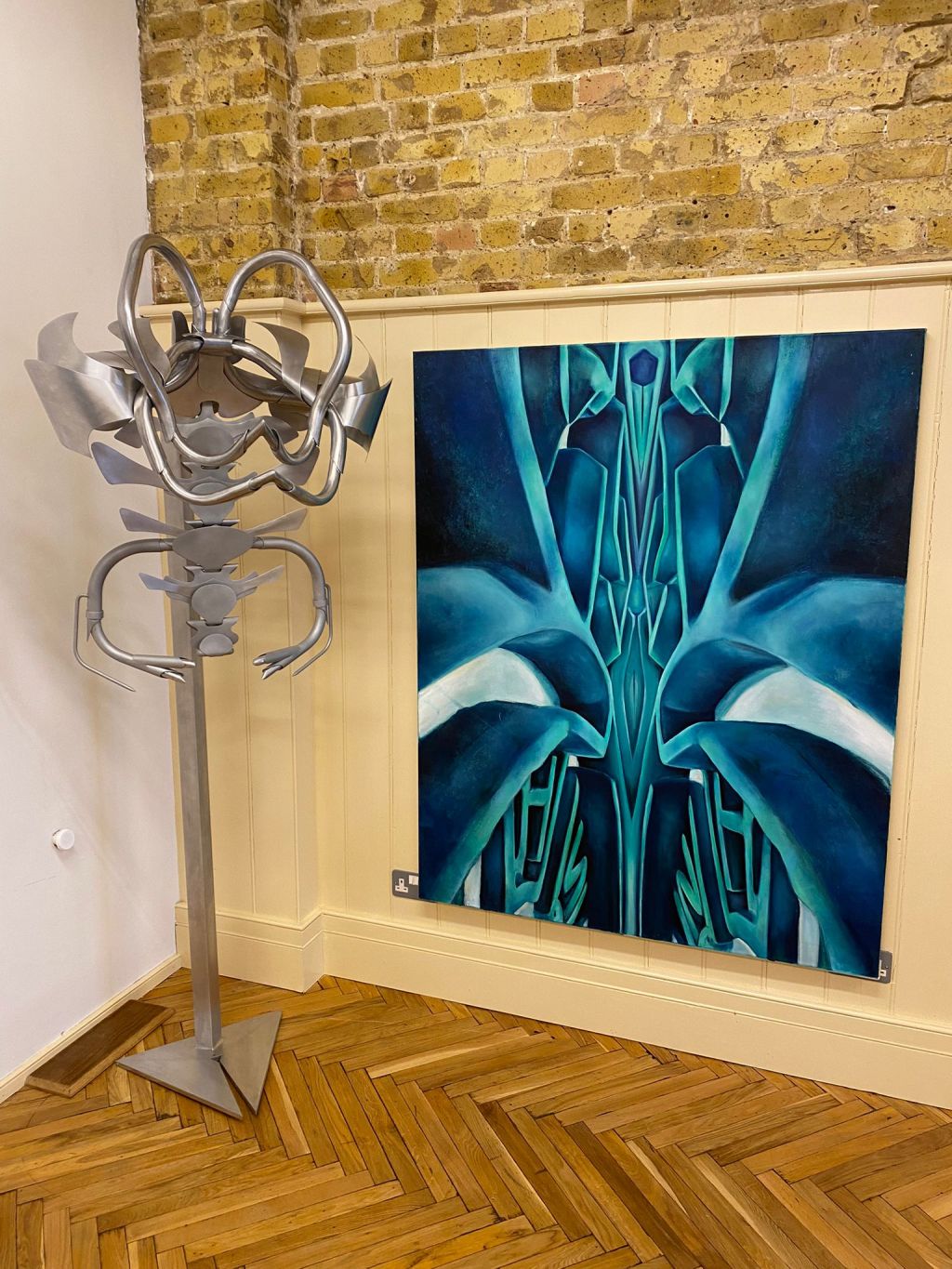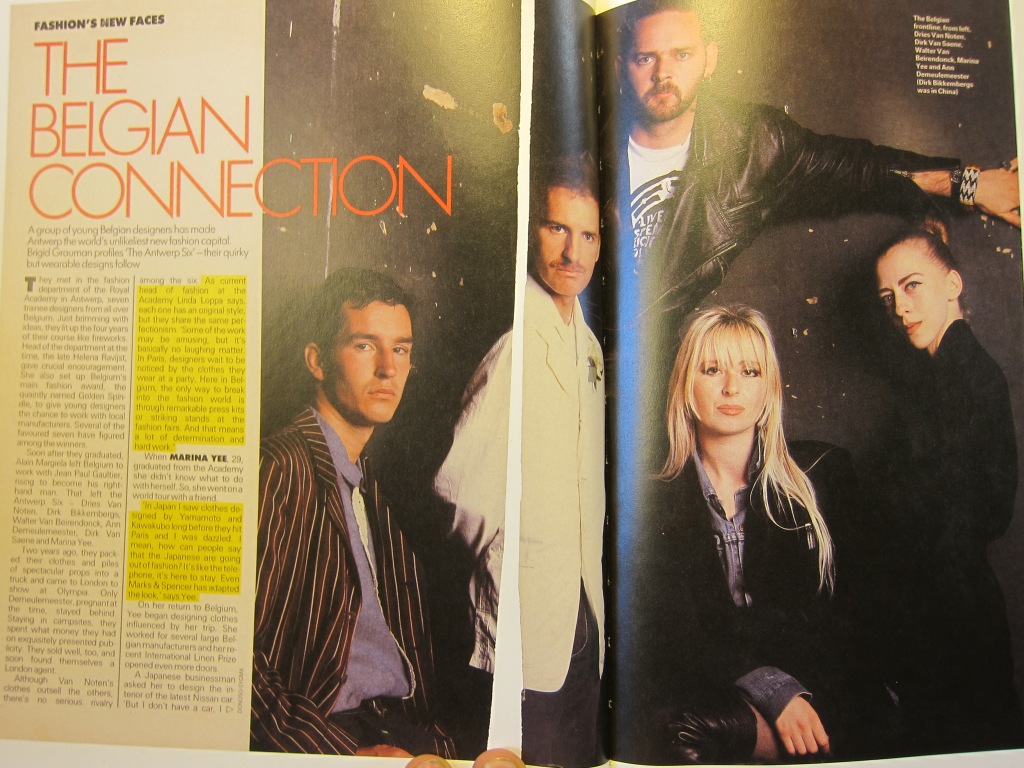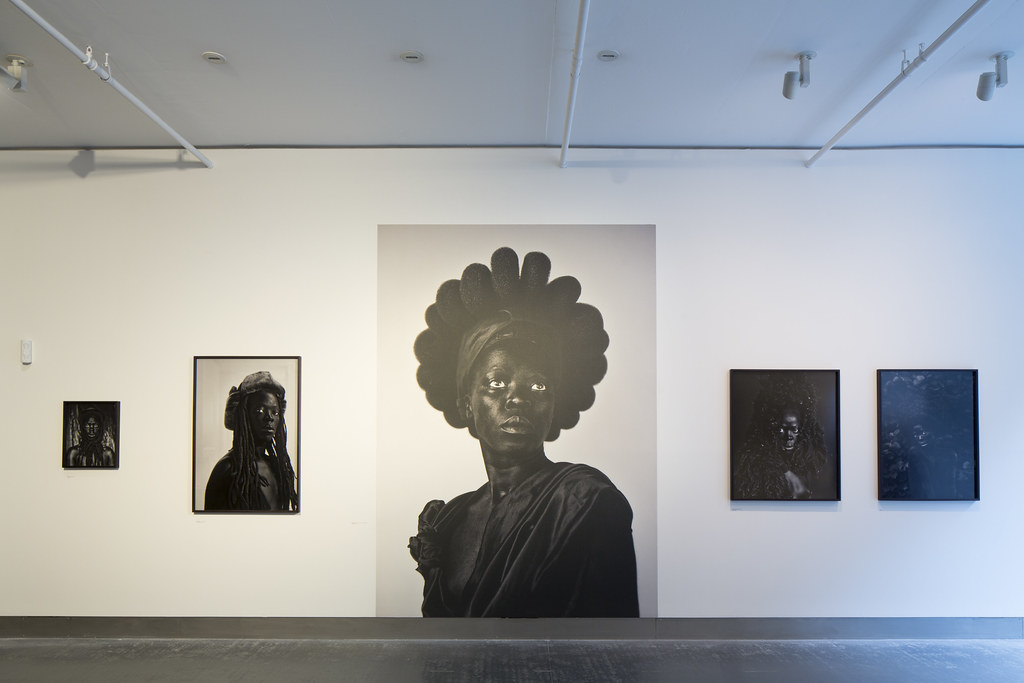Ewa Czwartos – Polish visual artist, born in 1998 in Sucha Beskidzka. From 2018 to 2023 she studied at the Faculty of Painting at the Jan Matejko Academy of Fine Arts in Kraków. Diploma in the atelier of prof. Andrzej Bednarczyk, under the direction of PhD Michał Zawada. Collaborates with the Otwarta Pracownia (Open Studio) Artistic Association. Works with painting, drawing and animated film.
“… Draw. Paint. To stop, then set in motion. A repetitive flurry of thoughts. The enumeration of daily chores and the fruits harvested from them. A silent film. Frame by frame. I shout out loud. I throw out an enumeration like a blitz. I paint women. Mostly women. Intuition. Maybe they are me. Maybe I am them. The escaping gaze. Restrained. Hybrids…”
fragment from the thesis entitled I paint because my mouth is closed
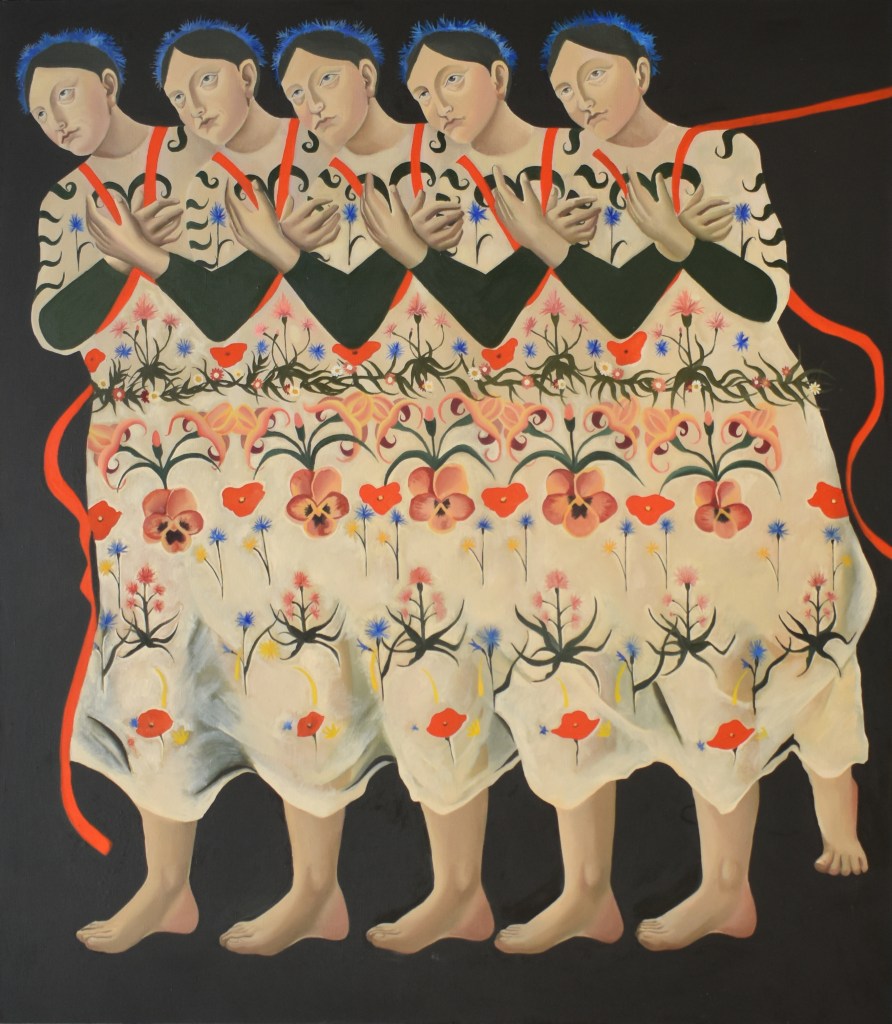
Could you share with us how your journey as an artist began and what drew you to the world of visual arts?
I’ve been drawing for as long as I can remember. It was something natural for me, the only activity that never bored me. There was hardly a day when I didn’t draw. Despite many other activities, expressing thoughts through images was the most concrete for me. I never had doubts about what I wanted to do in life. The first significant step was attending an Art High School, followed by studying at the Academy of Fine Arts in Krakow. These choices confirmed my earlier assumptions. Creative work provides freedom. Everything depends on me here—on my work, perseverance, resourcefulness. I don’t have to adapt to anyone. I don’t execute someone else’s ideas. I create my own system of symbols, an alphabet through which I can communicate and tell my story.
You graduated from the Faculty of Painting at the Jan Matejko Academy of Fine Arts in Krakow. How did your academic journey influence your artistic style and approach?
The Academy provides a protective umbrella. You can focus solely on your work. Nothing distracts, and that’s important because studies are a short but very intense period. It’s a time of exploration, frequent changes, clarifying one’s stance. It’s about developing a working method that will serve in “adult” life, understanding craftsmanship as a way of thinking. Just because I’m currently primarily engaged in painting doesn’t mean I can’t switch to something completely different. Versatility and flexibility. These, I believe, are the qualities that remain after the Academy, where for five years, you can observe various attitudes and work methods. It provides the most.

You are involved in creating stop-motion animated films, which also inspire your paintings. How does this technique influence your approach to painting, and what challenges and benefits does it bring to your creative process?
Painting is my primary focus. Creating animated films is a tedious, time-consuming activity, and it’s challenging to work simultaneously on both fronts with similar intensity. Currently, my animations are typical frame-by-frame drawn films, but during my studies, I experimented with various animation techniques, including cutouts. This method teaches patience; you create hundreds of nearly identical elements to achieve smooth motion. However, I discovered that, in addition to the film, I also have material to create drawing compositions. That’s how my first multiplications were born. From animated film to drawing, to painting. Today, I no longer need to spend dozens of hours cutting out thousands of elements. I have that experience within me and use it in my painting work.

Could you tell us about the process of creating one of your latest works? What were the inspirations and challenges?
Currently, I am working on my first solo exhibition. The works are being prepared specifically for a particular space. Each one is autonomous, but it is subordinating to the overall concept. One could say that the “work” here will be the exhibition itself, with its idea as a reference point. The main axis of the exhibition will be paintings immersed in old painting techniques. I practice a kind of appropriation art, extracting female figures from the canvases of old masters and rearranging them. Figure after figure. I mix images, abandoning familiar backgrounds.

Could you delve into the symbolism and themes presented in your works and how they reflect your personal narrative or broader social contexts?
I don’t separate these two narratives; they are always intertwined. I start, of course, from observing micro-communities and mainly tell a story through my perspective, but I believe that no individual experience is 100% unique. Fortunately, I didn’t fall into the “snowflake” generation, so I realize that I’m not reinventing the wheel. I consciously operate on borrowings, both visual and cultural in general. One could say that my paintings are a kind of reminiscence of the past world. They provoke discussions about changing social roles. Whether this change is a novelty or a return to a forgotten past? With the constant circulation, some trends return, while others go out of fashion for a while. Like in my paintings. Apparently identical figures, like frames of an animated film adjacent to each other. Time passes, and people remain the same. Mothers take the place of grandmothers, daughters become mothers. The same choices, the same mistakes. I want to break free from this micro-world. Move forward.
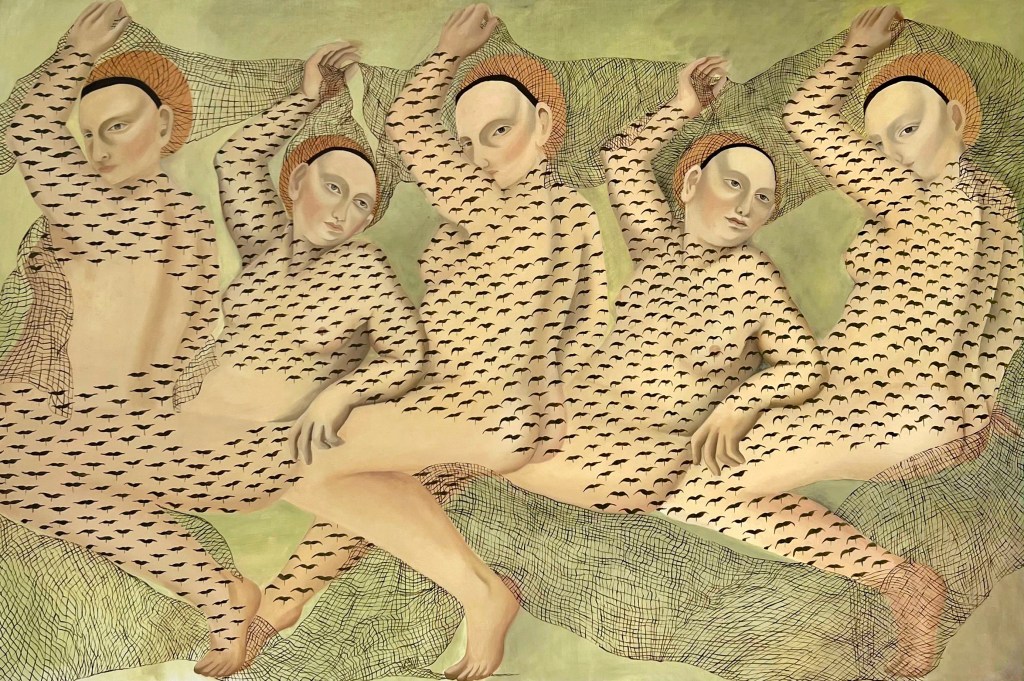
What are the key values you aim to convey through your art? Is there any specific message you would like people to find in your works?
If art has an empowering force, my “wishing” won’t matter. I won’t force anyone to find something specific. My job is to paint, that’s what I focus on. The paintings I create are not complicated puzzles, and with a commentary, they are easy to decipher. What people will do with them is beyond me.

Could you tell us about a typical working day in your studio? How do you organize and structure your day?
Everything changes depending on the situation in my life and mundane matters like the time of year. During my studies, there were months when I worked every day, from morning to late evening. Now I give myself more space for other experiences. Although I’m still in the studio 5-6 days a week. Without good artificial light, I naturally work until it gets dark. It’s like working part-time at 3/4. From 10 am to 4 pm. I share the space with my husband. We have a coffee maker, we are listening audiobooks, music or talk. Nothing extravagant. Our studio is located far from the center, somewhat secluded, so in winter months, there’s nowhere to go; we are doomed to work. In the evenings, I usually draw something, preparing for new projects.
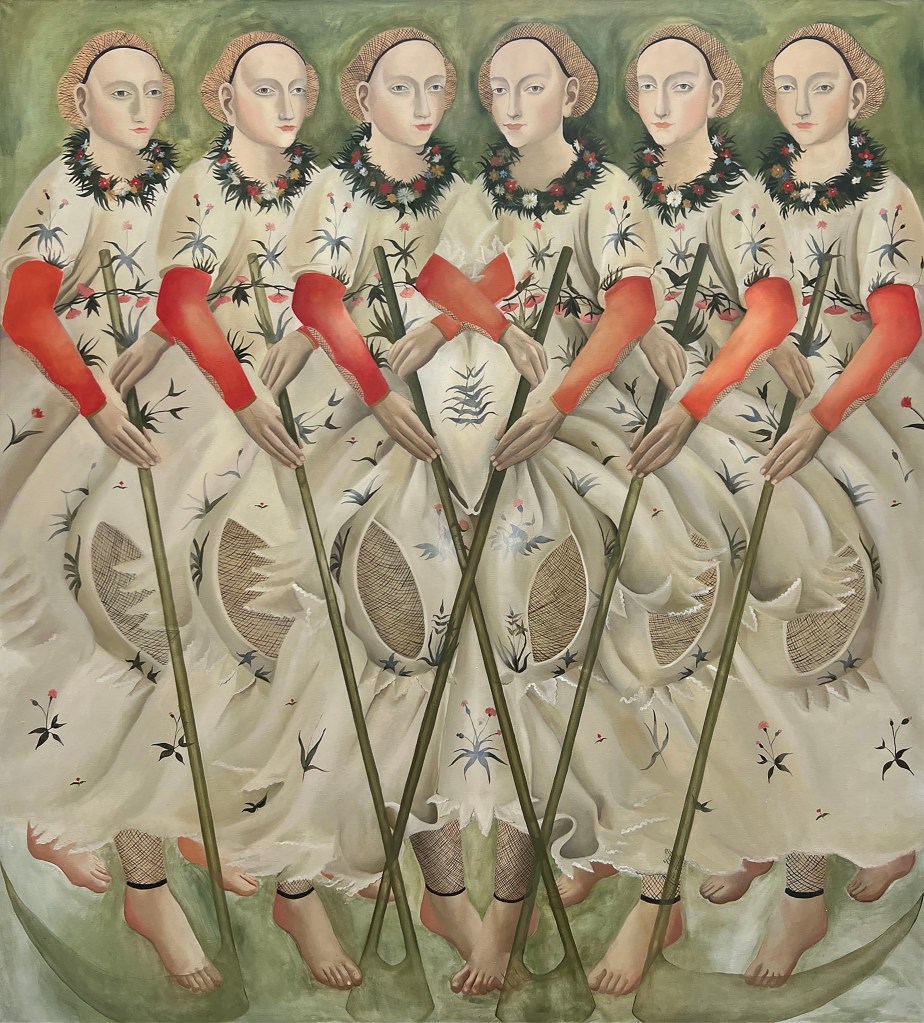
Do you have any special rituals or preparations before starting work on a new piece?
During painting, various decisions need to be made, and there are many variations of solutions, but only one can be used at a given moment. The rest of the options can become starting points for subsequent works. It’s enough not to let them escape, note them, or make a quick sketch.

